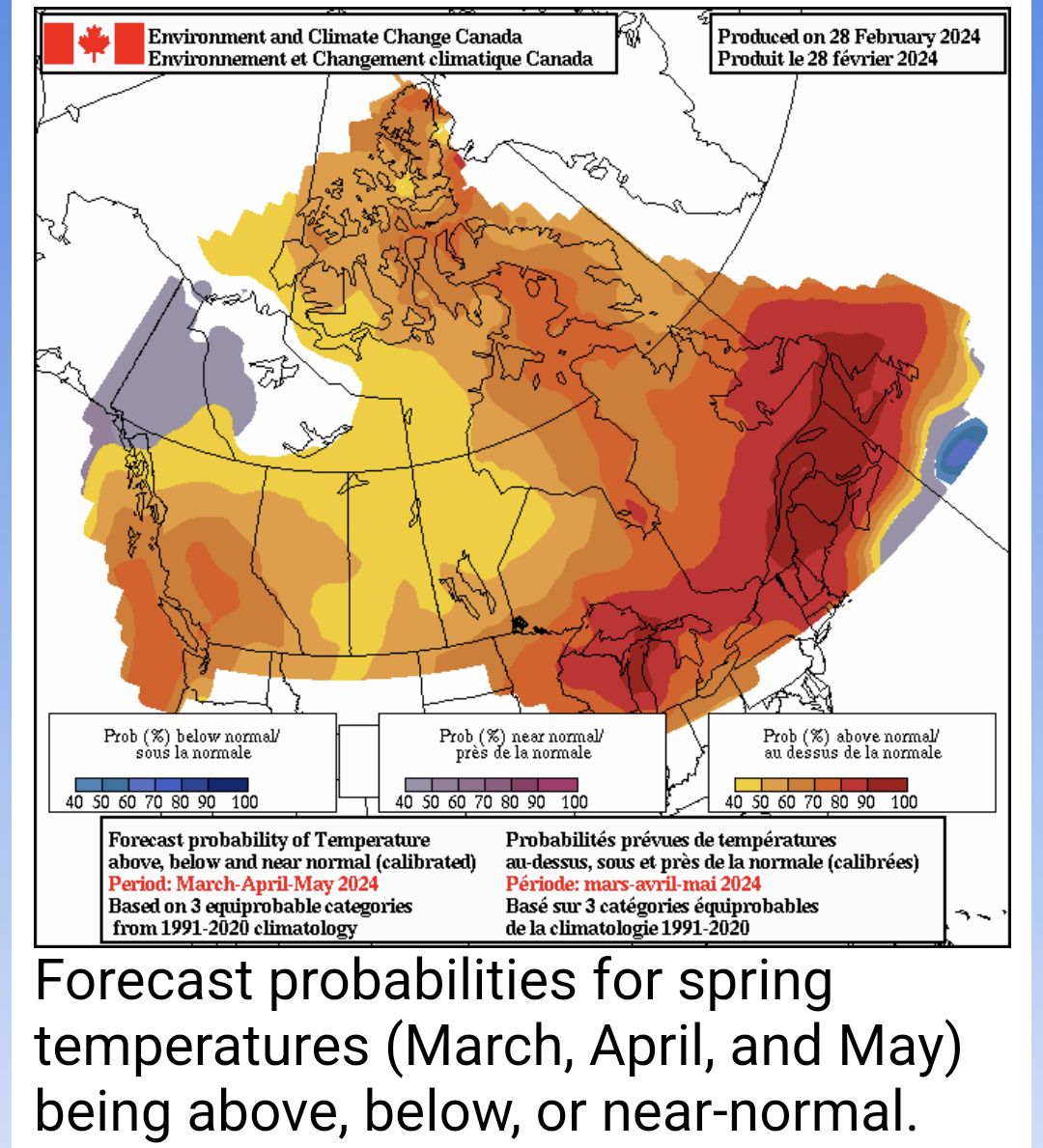**** Info via Environment Canada
Spring has sprung
Spring has arrived! Meteorologically speaking, spring arrived on March 1. However, with one of the warmest winters ever recorded in Canada, many parts of Canada have already been experiencing springlike temperatures for some time. Above-normal temperatures in the last week have also set daily temperature records in many parts of Western Canada.
Here’s our temperature outlook on what you can expect for this upcoming spring season:

Over the next two and a half months, the above-average winter temperatures are expected to persist across most of the country, except for parts of the Northwest Territories and the Yukon.
Spring equinox
Today also marks the arrival of the spring equinox, a time when night and day are approximately equal length all over the Earth. The word equinox comes from the Latin words equi (meaning equal) and nox (meaning night).
An equinox happens between the winter and summer solstices and marks the point when the Sun positions itself exactly above the equator before crossing it.
This year’s spring equinox is a bit different since it will fall on two separate days across Canada because of the country’s different time zones. It will arrive at 3:06 UTC time on March 20. This means that it will arrive in the early morning of March 20 in the Atlantic provinces, while it will arrive in the late evening on March 19 for the rest of Canada.
El Niño is weakening
According to the World Meteorological Organization (WMO), the 2023-24 El Niño has peaked as one of the five strongest on record. It is now gradually weakening but it will continue to impact the global climate in the coming months, intensifying the warming from human emissions of greenhouse gases. As such, above normal temperatures are predicted over almost all land areas between March and May.
In its new update, the WMO mentions there is about a 60% chance of El Niño persisting during March-May and a 80% chance of neutral conditions (neither El Niño or La Niña) in April to June.
What is El Niño?
El Niño is the warm phase of a recurring climate pattern known as El Niño-Southern Oscillation (ENSO). It occurs on average every two to seven years, and typically last nine to 12 months. It influences weather and storm patterns in different parts of the world. La Niña, the cool phase, occurs about every three to five years.
El Niño typically has the greatest impact on the global climate in the second year of its development – in this instance, 2024.



